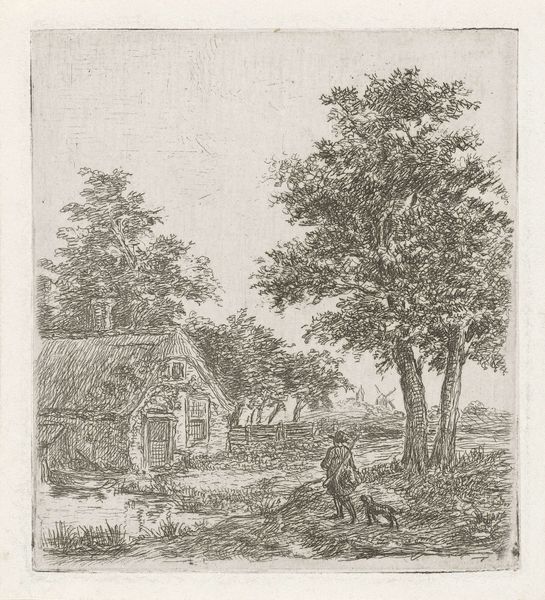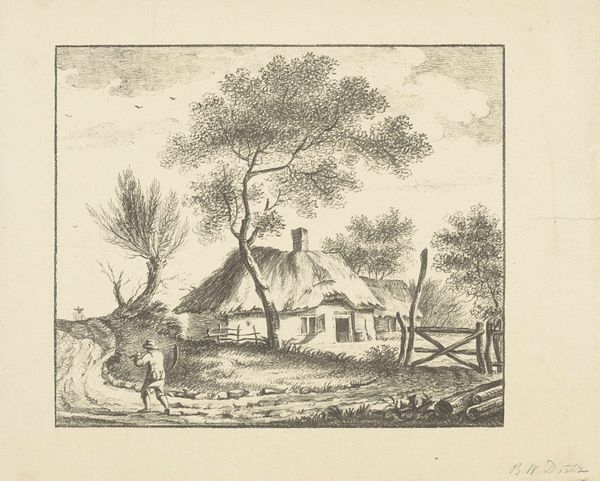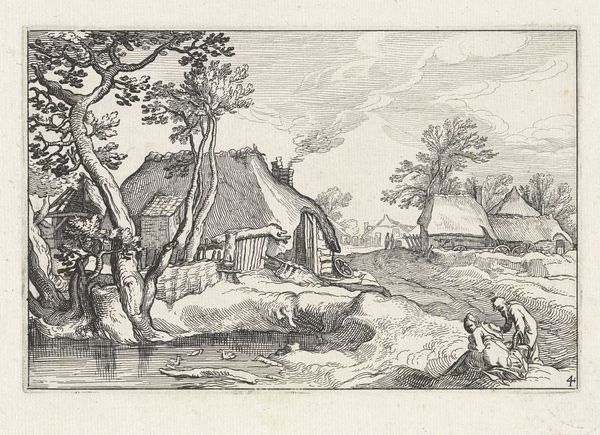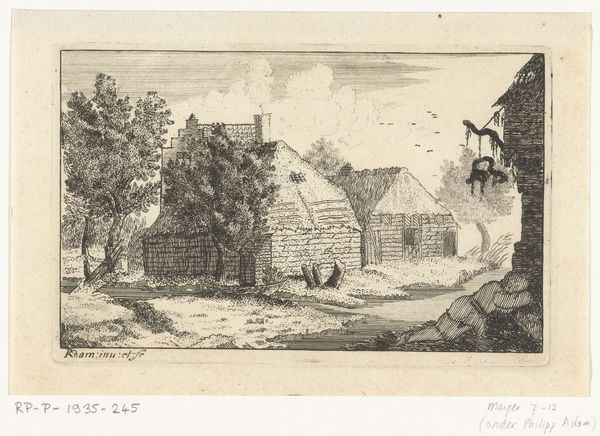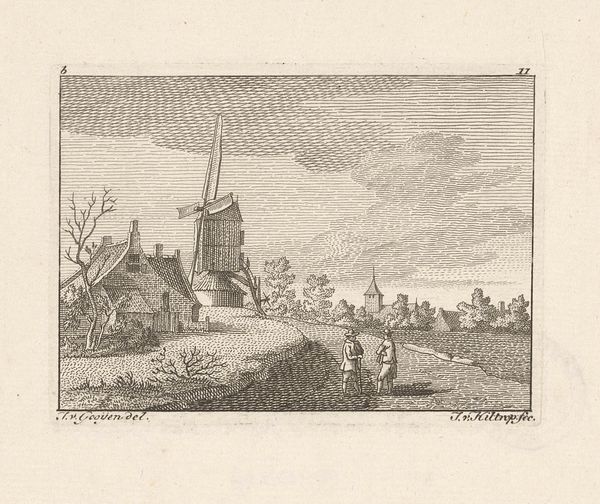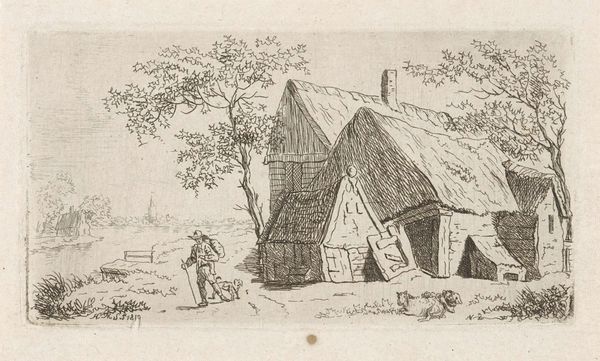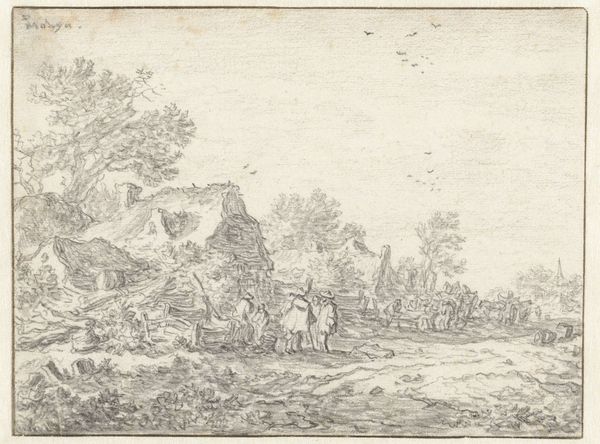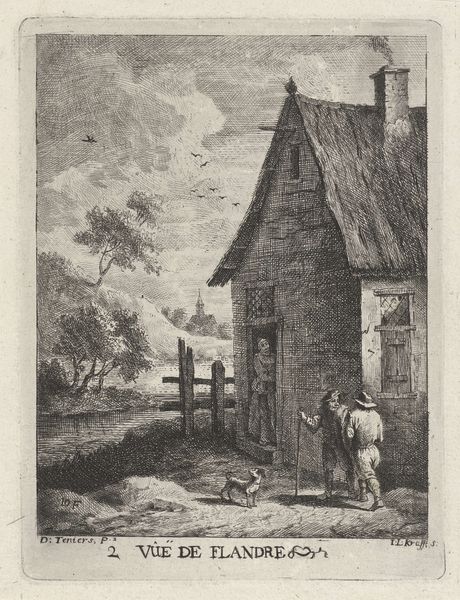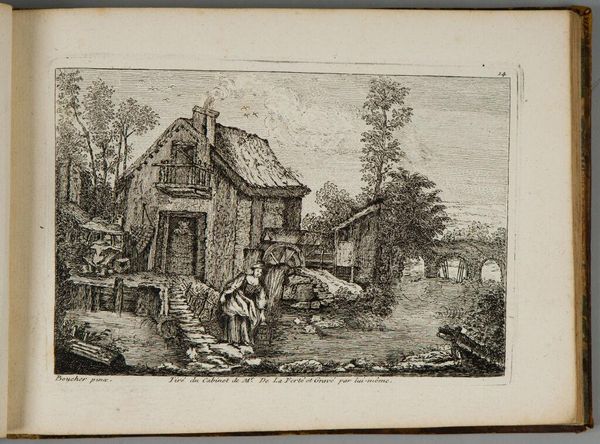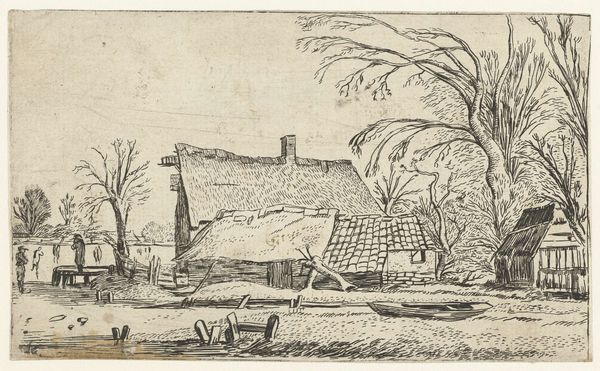
drawing, print, etching
#
drawing
# print
#
pen illustration
#
pen sketch
#
etching
#
landscape
#
genre-painting
#
northern-renaissance
Dimensions: height 88 mm, width 65 mm
Copyright: Rijks Museum: Open Domain
Curator: Here we have "Winter Landscape with Ice Skaters" created sometime between 1778 and 1838. The piece, housed here at the Rijksmuseum, is a pen illustration combining drawing, etching, and print techniques. Editor: My first impression is that it is surprisingly intimate despite the breadth of the landscape. The muted tones and delicate lines give it a hushed, almost dreamlike quality. Curator: Indeed. Anthonie van den Bos, the artist, captured the scene of daily life in the countryside during winter. The etching highlights labor and recreation interwoven. Consider how the figures engage: pulling sleds, gathering wood… It’s all about the practical interactions within this specific social and economic structure. Editor: From a formal standpoint, observe how the diagonal lines of the sled tracks and rooftops lead our eye deeper into the composition, creating a sense of depth despite the flat, two-dimensional quality of the print. The artist’s command of line weight contributes to this spatial illusion. The whole piece rests on formal contrasts. Curator: And how that very “flatness” you mention makes it accessible. Printmaking allowed for wider circulation; therefore, themes like genre-painting reached broader audiences. Think about how the rise of market culture impacted the themes artists selected. People were literally buying into these idealized portrayals of winter leisure. Editor: Perhaps. But I see it more as a study in tonal balance, and the skillful execution of hatching to create texture and depth. Consider the treatment of the sky, for instance. Those clouds, rendered so subtly, evoke a distinct sense of the chill in the air. It conveys mood, independent from laboring and purchasing power, directly from a carefully observed structure. Curator: Even that atmospheric quality points to how reliant Dutch society was on specific climactic conditions. These moments shaped the rhythm of labor, leisure, trade… Editor: True, the landscape grounds the piece and provides an understanding of scale. Yet its real power resides in the arrangement of shapes and lines creating spatial ambiguities for us to deconstruct and contemplate. Curator: For me, considering its origin as a print helps us connect this evocative landscape to a tangible market—linking aesthetics and social function together seamlessly. Editor: A lovely point to conclude; this print indeed gives insight, however we choose to frame that vision.
Comments
No comments
Be the first to comment and join the conversation on the ultimate creative platform.
